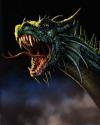| Online: | |
| Visits: | |
| Stories: |

| Story Views | |
| Now: | |
| Last Hour: | |
| Last 24 Hours: | |
| Total: | |
The Screaming Mummy: The Lost Secret Of DB320′s Mystery Man

- Mysterious Universe
- Micah Hanks
Some time during the 15th century BC, an elaborate complex of tombs and mortuary temples were built along the Nile’s west bank near modern day Luxor, Egypt. Known as “The Northern Monastery” or Dayr el-Bahri, the eerie site and its structures rest in the great Theban Necropolis, dating back as early as the Eleventh dynasty.
One of the area’s earliest afterlife occupants had been none other than Mentuhotep II, famous first Pharaoh of the Middle Kingdom. But arguably, the most captivating of the features hidden away within this striking complex is Hatshepsut’s temple, the famous “Holy of Holies”, which now stands as an irregular (and heavily looted) monument emerging forth from a sharp cliff face. Here, he sloping inclines and platforms had once been lined with sphinxes and giant likenesses of the great Osiris. But despite the overpowering splendor offered by Hatshepsut’s temple, there are lesser mysteries offered here, and some which boast their own brand of odd peculiarities.
Nearby, a burial site designated Tomb DB320 exists, which upon excavation had been revealed to house the remains of some 50 members of ancient Egyptian dynastic royalty. The tomb was first uncovered by a local family, presumably some time in the late 1870s, who used the secret of its existence as a protection whilst removing various treasures and selling them for profit. In 1881, an official investigation by Émile Brugsch occurred, in response to curiosity regarding where the objects sold by the locals might have come from. With two days of arrival, what became Tomb DB320 was emptied, to prevent further theft or sale of the antiquities it contained. Subsequent probes of the emptied tomb would occur again in 1938, after which the place stood empty again until the late 1990s, when Egyptologist Erhart Graefe and his team began what would remain an ongoing project aimed at preserving the tomb.
Reposted with permission



